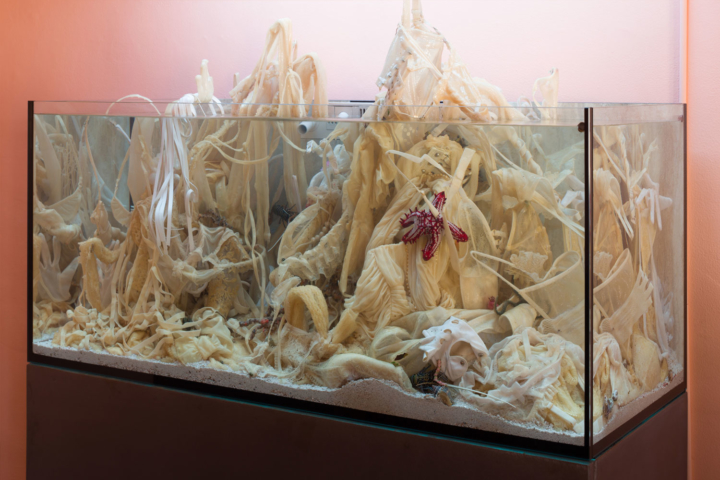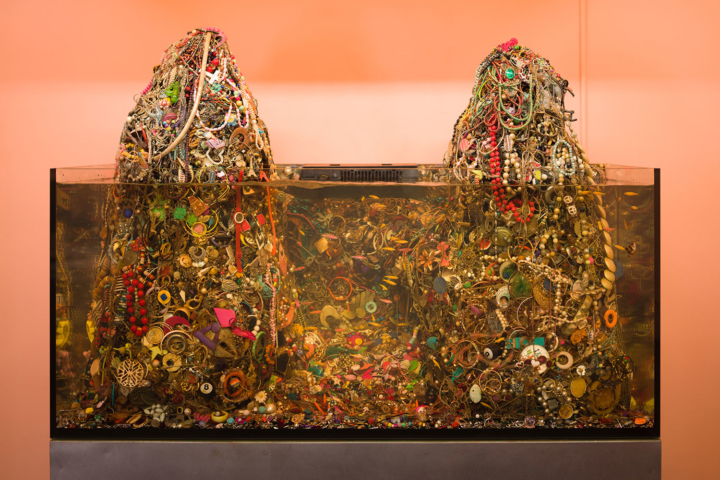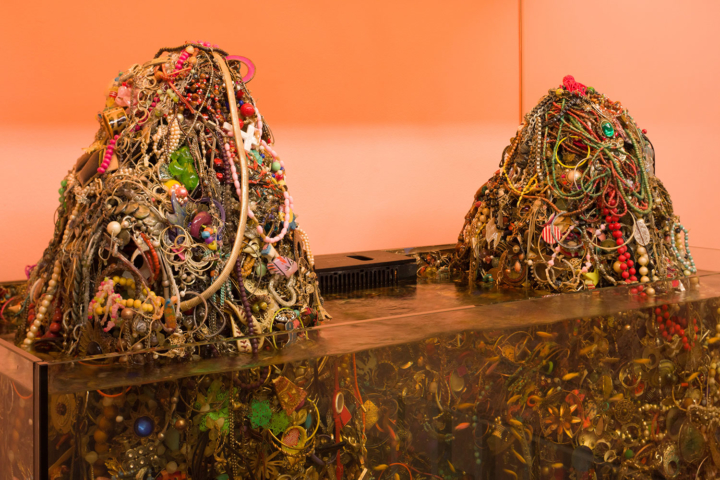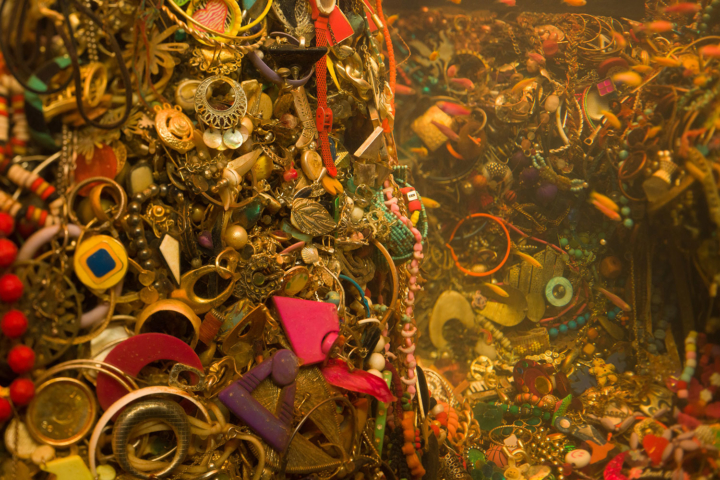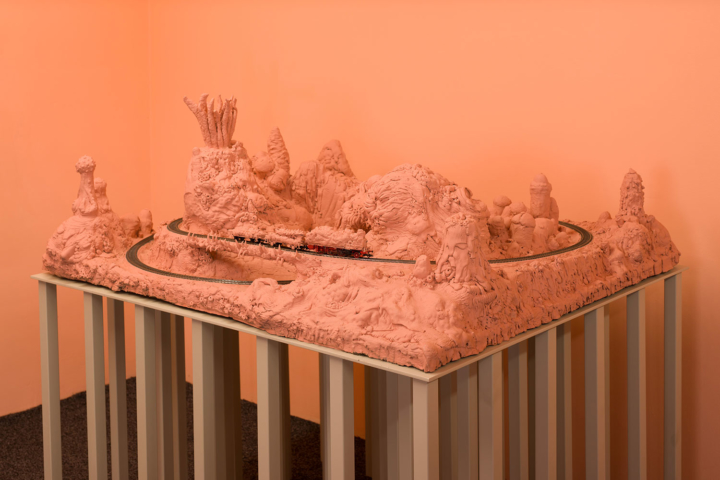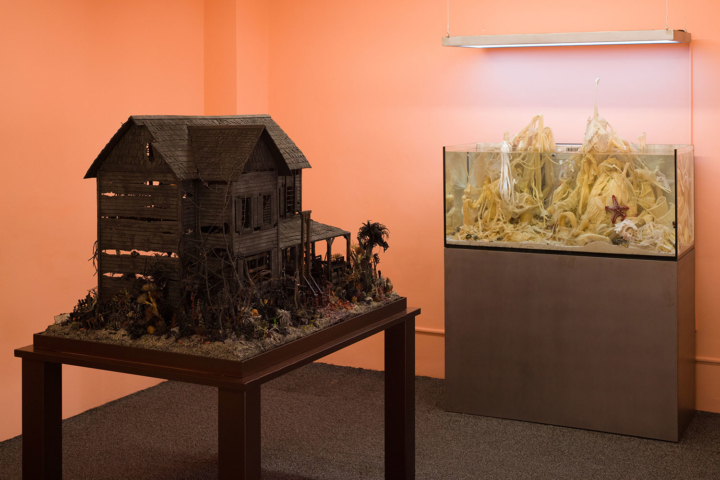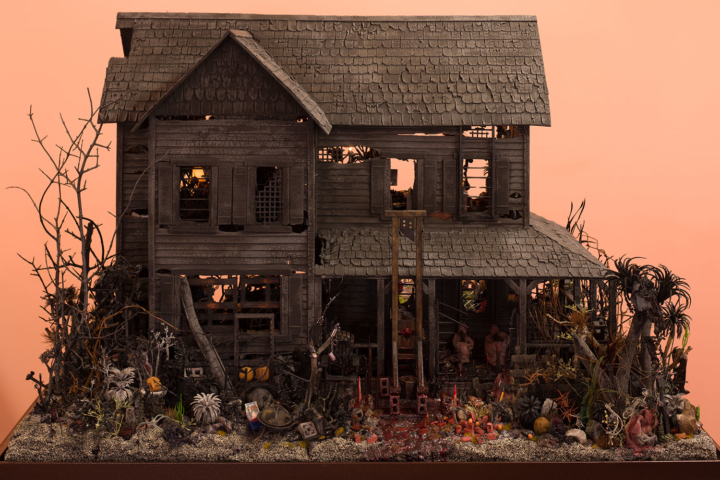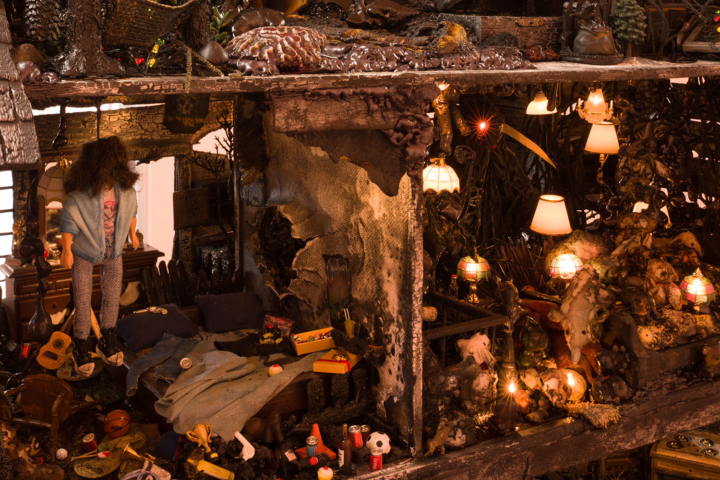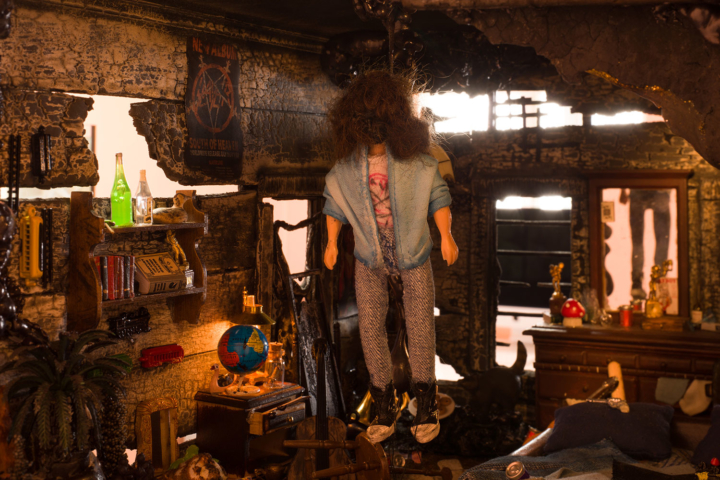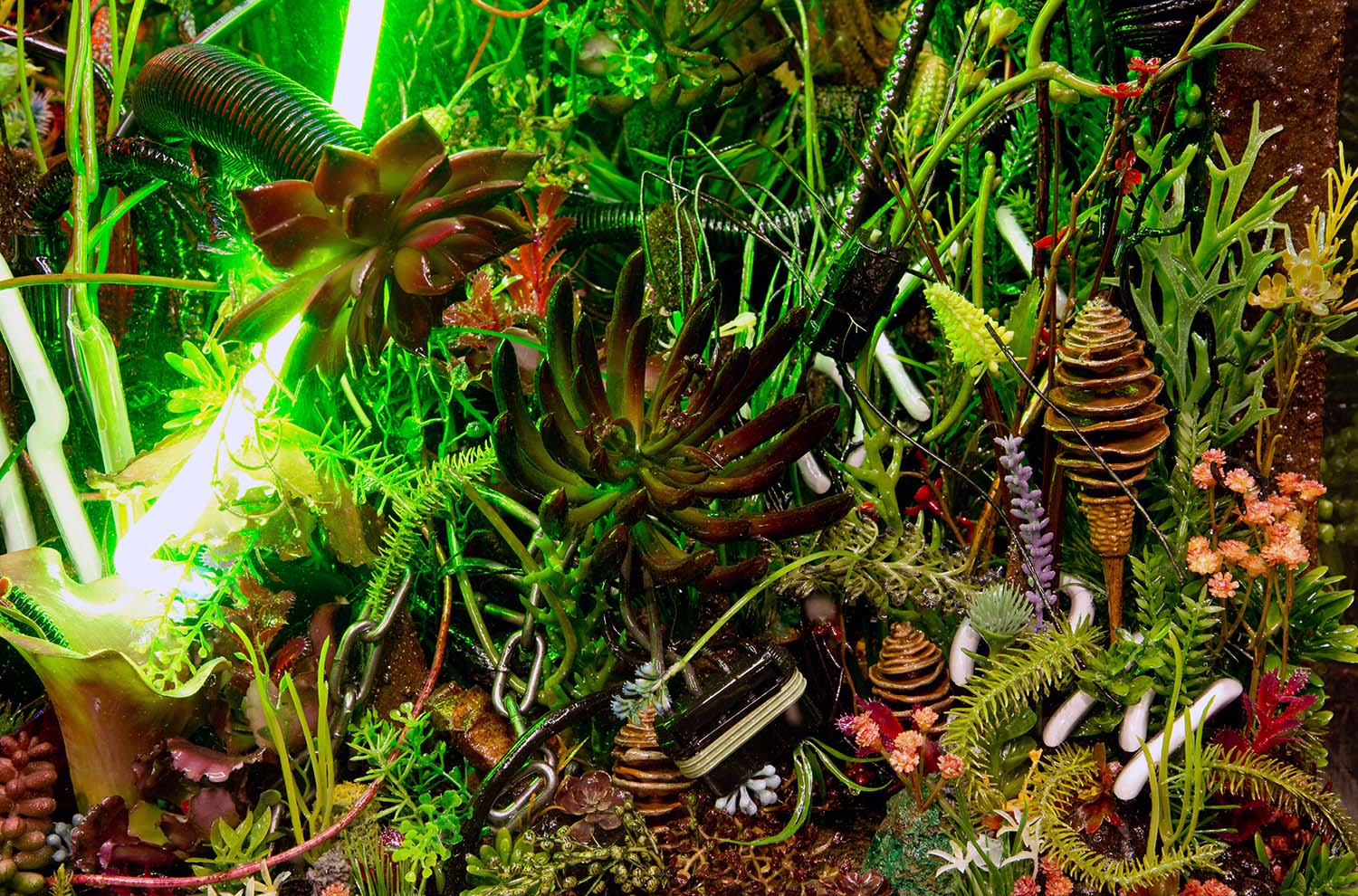“Tryouts for the Human Race” is Max Hooper-Schneider’s second solo show at Jenny’s — and a 1979 proto-disco song by Sparks from their Giorgio Moroder era. The space is comprised of two aquariums populated by living organisms, a miniature train set, and a dollhouse, all sleek tokens for a continuing relationship of trust and fervor between the artist and his LA gallery.
The gallery’s walls, ceilings, and outlets are painted a fleshy pink color that bleeds into the complexion of anyone walking in, and gray-carpeted floors make the space feel alien. The miniature train set shares the walls’ color, sculpted in what looks like melted human flesh with to-scale human features poking through its terrain. Titled Utopia (2018), the work could suggest the future of the body, fully integrated with a transportation system and serene as a landscape. Although not referential to an existing place, the piece is reminiscent of Mike Kelley’s Chinatown Wishing Well (1999) in its homogenous build and sublimated reality. This is the first of many possible nods in the show to local and close-at-heart artists. One of the aquariums, Genesis (2018), is strongly reminiscent of Kelley’s “Memory Ware” series. The aquarium is host to tiny multicolor fish swarming alongside two massive mounds of trinkets and jewelry, many of them with pearl (real or not) finishes. The hundreds of jewelry items were carefully chosen to invoke nostalgic signs of a near-gone humanity. Cartoonish leopard prints, generic Hawaiian flowers, laminated snakeskins, and painted wooden figures are softly highlighted by touches of pink plastic, peace signs, crosses, or minuscule locks from teenage diaries. Scattered throughout are a few message pendants that spell out “discovering,” “spice,” “Mi$str$$,” “faith,” “friends,” and “HELP,” hinting at feelings no longer in effect within this ecosystem. Across the room, a white aquarium recalls Hooper-Schneider’s work as a technician for Pierre Huyghe’s 2014–15 LACMA show, with its dramatic lighting and precise composition. Many artists do skilled and unskilled work for more established ones, so why not in turn display the skills attained through hours of labor and collaboration? Titled Lady Marlene (2018), the aquarium features two mounds of marine resin–coated white vintage lingerie, with lace flowers recalling coral and draped silks forming elegant reefs. Various species of fish, crabs, and cockles crawl and swim among the newly formed ridge, with the implied hope that they might integrate into this environment. During my time in the gallery, a decorator crab escaped to carpet level, while another began eating the flesh off a plump starfish, forcing the gallerists into the roles of full-time lab technicians in order to avoid the work’s self-destruction. Even the landscape features of this Theater of Cruelty imply sentient movements of resilience, with bra straps arranged to suggest lifting shoulders and fishnet gloves pointing up above the water’s surface.
The last piece in the show, Mommy & Me (2018), is a large dollhouse partly completed in New Mexico, where Hooper-Schneider’s mother resides and where he got acquainted with a dollhouse expert who served as advisor for the project. Jenny tells me the advisor told Hooper-Schneider that “whatever you can imagine in real life exists in miniature,” suggesting unknown parallel worlds of intersecting ideas. Indeed, among hundreds of items, the partly burnt dollhouse contains multiple kinds of miniature garden lights, cinder blocks, a twice-miniaturized train set, a book titled History of the United States, an Obituary poster, and a box of Christmas decorations. Several rarefied human-scale artifacts stand out amid the abundance of appropriately sized dollhouse furnishings: a coiled phone cord ends in a curly branch, tiny limes are dried to look like pumpkins, and a miniature brain coral reef could equally pass as a human brain prop. Adding subtlety to the piece, the five rooms in the house have very distinct lighting, from the neon-lit ground-floor pet store to the warmly lit, tar-damaged Tiffany lamp store upstairs. Somehow it’s much easier to imagine reveling in the construction of such a lavish piece while living with one’s mother, where the surrounding domestic space would provide the artist with a living continuum. Film production, biology, landscape architecture, and various hobbyist practices are all parts of Hooper-Schneider’s context and schooling, and his works recognize and speak to all of these worlds, on both material and theoretical levels — in turn requiring the gallerists to get acquainted with new audiences, aquatic species, and various maintenance professionals during the course of the exhibition. Following the string of nods in the show, this last piece certainly echoes LA-based Richard Hawkins’s — who also exhibits with Jenny’s — series of haunted altered dollhouses, which get as much coverage on craft blogs and Pinterest as they do in art publications. Working with manifold interests and informed precision, Hooper-Schneider shares with Hawkins, Huyghe, and Kelley an unapologetic dedication to materializing parallel, lifelike visions of our present.

